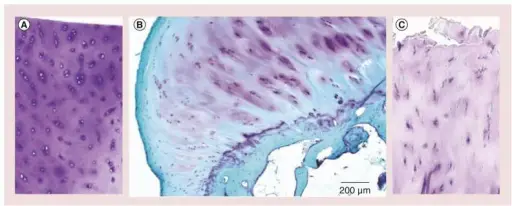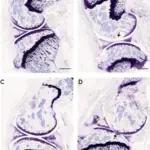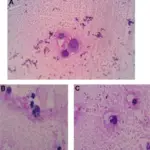Osteoarthritis is a degenerative joint disease that damages articular cartilage of synovial joints.
What is the Pathology of Osteoarthritis?
The pathology of osteoarthritis is:
-Etiology: The cause of osteoarthritis is the damage or breakdown of joint cartilage between bones.
-Genes involved: None.
-Pathogenesis: The sequence of events that lead to osteoarthritis involves degeneration of cartilage and bone of synovial joints.
-Histology: The histology associated with osteoarthritis shows osteophytes and erosion of the articular surface.
How does Osteoarthritis Present?
Patients with osteoarthritis typically present with synovial joint pain and stiffness. The associated pain and stiffness in joints worsens with activity and is relieved by rest. The pain tends to worsen throughout the day, but the stiffness tends to improve throughout the day. Prolonged osteoarthritis can result in deformity and reduced range of motion.
How is Osteoarthritis Diagnosed?
Osteoarthritis is diagnosed by doing routine blood tests that can be useful to exclude inflammatory or infectious causes. Radiographic imaging may be useful for confirming the diagnosis and ruling out fractures.
How is Osteoarthritis Treated?
Osteoarthritis is treated using analgesics and topical NSAIDs. Intra-articular steroid injections may be considered for certain patients.
What is the Prognosis of Osteoarthritis?
The prognosis of osteoarthritis is good. Osteoarthritis is not reversible.



